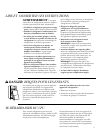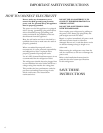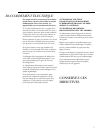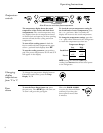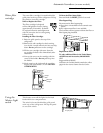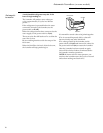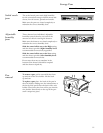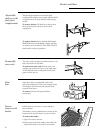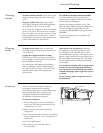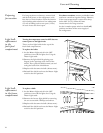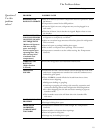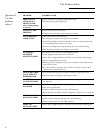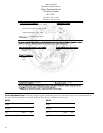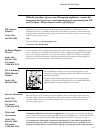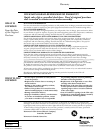
The Problem Solver
Bottom Freezer Refrigerator
15
Questions?
Use this
problem
solver!
PROBLEM POSSIBLE CAUSE
REFRIGERATOR •May be in defrost cycle when compressor does not operate for about
DOES NOT OPERATE 30 minutes.
• Temperature control in the OFF position.
• If interior light is not on, refrigerator may not be plugged in at
wall outlet.
• The fuse is blown/circuit breaker is tripped. Replace fuse or reset
the breaker.
MOTOR OPERATES • Normal when refrigerator is first plugged in. Wait 24 hours for the
FOR LONG PERIODS refrigerator to completely cool down.
OR CYCLES ON AND
• Often occurs when large amounts of food are placed in refrigerator.
OFF FREQUENTLY
This is normal.
• Door left open or package holding door open.
• Hot weather or frequent door openings. This is normal.
• Temperature controls set at the coldest setting. See Temperature
Controls.
VIBRATION OR • Level the refrigerator. See Installation Instructions.
RATTLING
(Slight vibration
is normal.)
OPERATING • Normal fan air flow—one fan blows cold air through the fresh food
SOUNDS and freezer compartments—another fan cools the condenser area
behind the grille panel.
• These NORMAL sounds will also be heard from time to time:
•Defrost water dripping.
•Refrigerant boiling or gurgling.
•Cracking or popping of cooling coils caused by expansion and
contraction during defrost and refrigeration following defrost.
•Ice cubes dropping into the bin and water running in pipes as
icemaker refills.
•The icemaker water valve will buzz when the icemaker fills
with water.
DOOR NOT CLOSING • Refrigerator not level. See Installation Instructions.
PROPERLY
• Package holding door open.
FRESH FOOD • Temperature controls not set cold enough. See Temperature
OR FREEZER Controls.
COMPARTMENT
• Warm weather or frequent door openings.
TOO WARM
• Door left open for long time.
• Package may be holding door open.
(Modern refrigerators
with more storage
space and a larger
freezer require more
operating time. They
start and stop often
to maintain even
temperatures.)



